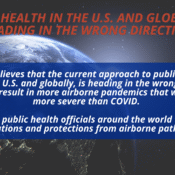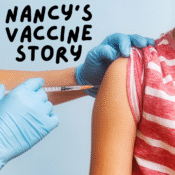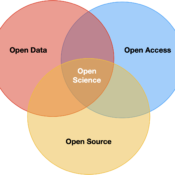
10 Pieces of Disinformation About SARS-CoV-2 (and the Truth You Deserve to Know)
The ongoing COVID-19A disease caused by the SARS-CoV-2 virus, leading to respiratory illness. pandemicA global outbreak of a disease. may no longer dominate headlines, but misinformation and disinformation about SARS-CoV-2The virus responsible for the COVID-19 pandemic. continue to spread, often faster than the virus itself. From minimizing its severity to questioning lifesaving tools like vaccines and masks, falsehoods can be dangerous, not just misleading. Let’s set the record straight on 10 of the most persistent myths still circulating about COVID-19A disease caused by the SARS-CoV-2 virus, leading to respiratory illness..
1. What you’ve heard: “COVID is over.”
The Truth: Wishful thinking, not fact.
The COVID-19A disease caused by the SARS-CoV-2 virus, leading to respiratory illness. pandemicA global outbreak of a disease. is over, amirite? No, it is not. Case reportingNotifying public health authorities of disease cases. essentially stopped years ago because of the “get back to work” mantra that permeates most countries, and while case reportingNotifying public health authorities of disease cases. has diminished (or disappeared), the virus continues to evolve and circulate globally. Hospitalizations and deaths still occur, everyone continues to remain at risk, Long COVIDPersistent symptoms following recovery from acute COVID-19. is currently affecting an estimated 400 million individuals in some capacity or another1https://www.yalemedicine.org/news/long-covid-keeps-people-out-of-work-and-hurts-the-economy, and reinfections can very much have cumulative health impacts2https://medicine.washu.edu/news/repeat-covid-19-infections-increase-risk-of-organ-failure-death/. When someone tells you the pandemicA global outbreak of a disease. is over, you can respond “sure, it’s just endemicA disease regularly found in a certain area. in every single country on Earth”.
2. What you’ve heard: “It’s just a cold.”
The Truth: False.
COVID-19A disease caused by the SARS-CoV-2 virus, leading to respiratory illness. is not a cold. While some symptoms can resemble a common cold, such as sore throat, congestion, or fatigue, SARS-CoV-2The virus responsible for the COVID-19 pandemic. is a novel coronavirus with the ability to cause severe illness, long-term health issues (Long COVIDPersistent symptoms following recovery from acute COVID-19.), and death. It is a multi-systemic illness3https://pmc.ncbi.nlm.nih.gov/articles/PMC9025828/, affecting not just the respiratory system but also the gastrointestinal, cardiovascular, neurological, and immune systems. Comparing it to a cold downplays its impact and risks and completely minimizes the virus. Do you know what other viruses also have cold symptoms? Ebola, HIV, Dengue, Hantavirus, Marburg, and many others. A symptom is just your body’s initial reaction to the virus – what it’s doing internally is potentially a lot more damaging. Don’t confuse the symptomaticShowing symptoms of a disease. nature with what’s happening inside.
3. What you’ve heard: “It’s just like the flu.”
The Truth: Also false.
COVID-19A disease caused by the SARS-CoV-2 virus, leading to respiratory illness. and influenza are both contagious respiratory illnesses, but they’re caused by different viruses, and SARS-CoV-2The virus responsible for the COVID-19 pandemic. is significantly more dangerous in many ways4https://www.ahcancal.org/News-and-Communications/Blog/Pages/Flu-or-COVID-19—Which-is-Worse.aspx. COVID-19A disease caused by the SARS-CoV-2 virus, leading to respiratory illness. has a higher rate of hospitalization, longer duration of contagiousness, and a broader range of complications including blood clots, heart inflammation, and cognitive issues. Plus, it spreads more easily, mutates way faster and can lead to long-term symptoms even after a “mild” case.
4. What you’ve heard: “Vaccines are more dangerous than COVID.”
The Truth: Blatantly untrue.
This is one of the most harmful and persistent pieces of disinformation out there. The COVID-19A disease caused by the SARS-CoV-2 virus, leading to respiratory illness. vaccines have undergone rigorous testing and continual safety monitoring5https://pmc.ncbi.nlm.nih.gov/articles/PMC11540079/, while serious adverse reactions are very rare – far less common than complications from getting infected. For example, the risk of myocarditis is far higher from a COVID infection than from vaccination. Are there risks with COVID-19A disease caused by the SARS-CoV-2 virus, leading to respiratory illness. vaccines? Absolutely, as there are with any other vaccine and/or pharmaceutical intervention. Vaccines reduce the chance of severe illness, hospitalization, and death. The overwhelming consensus among scientists and global healthHealth issues that transcend national boundaries. agencies is clear: the benefits of vaccination far outweigh the risks.
5. What you’ve heard: “Masks don’t work.”
The Truth: False again.
Masks absolutely reduce the spread of SARS-CoV-2The virus responsible for the COVID-19 pandemic.6https://www.mayoclinic.org/diseases-conditions/coronavirus/in-depth/coronavirus-mask/art-20485449. The virus is primarily transmitted via aerosols—tiny particles that can float in the air, especially in indoor, poorly ventilated spaces. High-quality masks like N95s, KN95s, and KF94s offer the best protection, but any mask provides more protection than none at all. When everyone masks, the risk to individuals and communities drops significantly. This is backed by centuries old physics equations and has been rigorously proven by engineers.
6. What you’ve heard: “COVID spreads mainly through surfaces.”
The Truth: Outdated and misleading.
Early in the pandemicA global outbreak of a disease., we were told to wipe down groceries and constantly sanitize surfaces. We knew early on that aerosolTiny airborne particles or droplets that can carry pathogens. transmission is the primary route of infection7https://pmc.ncbi.nlm.nih.gov/articles/PMC9538005/. This means the virus spreads through tiny airborne particles that can linger, especially indoors. While surface cleaning isn’t useless, focusing on ventilationThe process of circulating air to improve indoor air quality., masking, and air filtrationThe process of removing particles from the air or liquids using filters. is far more effective for prevention.
7. What you’ve heard: “If you’re young and healthy, you have nothing to worry about.”
The Truth: Not even close to true.
While older adults and people with underlying conditions face greater risk of severe outcomes, young and healthy people are not immune and certain strains have affected younger populations more than older8https://pmc.ncbi.nlm.nih.gov/articles/PMC9841678/. Many younger, “healthier” individuals have experienced severe illness, hospitalization, or long-term symptoms from COVID. Long COVIDPersistent symptoms following recovery from acute COVID-19. doesn’t discriminate by age and can follow even mild or asymptomatic cases.
8. What you’ve heard: “Natural immunity is better than vaccine-induced immunity.”
The Truth: Partially true, mostly misleading.
Vaccines remain the safest way to build immune defense.9https://pmc.ncbi.nlm.nih.gov/articles/PMC8957290/ It is true that natural infection can lead to some immunity, but at a much higher cost. You must survive the infection (with all its potential complications) to acquire it. Vaccine-induced immunity provides strong protection without the risks of hospitalization, long-term symptoms, or death.
9. What you’ve heard: “If I’ve had COVID once, I’m immune for life.”
The Truth: Incorrect.
Immunity, whether from infection or vaccination, wanes over time10https://pmc.ncbi.nlm.nih.gov/articles/PMC8863680/(for some, in as little time as a few weeks), and the virus continues to evolve. People can and do get reinfected, often within months. Each infection also carries the risk of Long COVIDPersistent symptoms following recovery from acute COVID-19. or further complications. Staying up to date with boosters and taking precautions in high-risk situations remains important.
10. What you’ve heard: “Only people with symptoms can spread the virus.”
The Truth: Dangerously false.
COVID-19A disease caused by the SARS-CoV-2 virus, leading to respiratory illness. can be spread by people who are asymptomatic or pre-symptomatic11https://pmc.ncbi.nlm.nih.gov/articles/PMC7200054/, and an estimated 40-50% of infections happen this way. This makes it especially tricky to contain. Someone who feels fine can unknowingly infect others, especially in closed environments. This is why testing, masking, and good ventilationThe process of circulating air to improve indoor air quality. are key tools to reduce silent spread.
Final Thoughts
We’re all tired of the pandemicA global outbreak of a disease. but misinformation and comforting lies aren’t the way out. Understanding how COVID spreads, how it affects the body, and how to protect ourselves and each other is essential. Listening to scientists who understand, following the data, and staying vigilant (even when it’s inconvenient) is how we save lives and reduce harm especially for the most vulnerable among us.
COVID isn’t “just” anything. It’s real, it’s still here, and the truth matters.
Stay informed. Stay kind. Stay safe.













